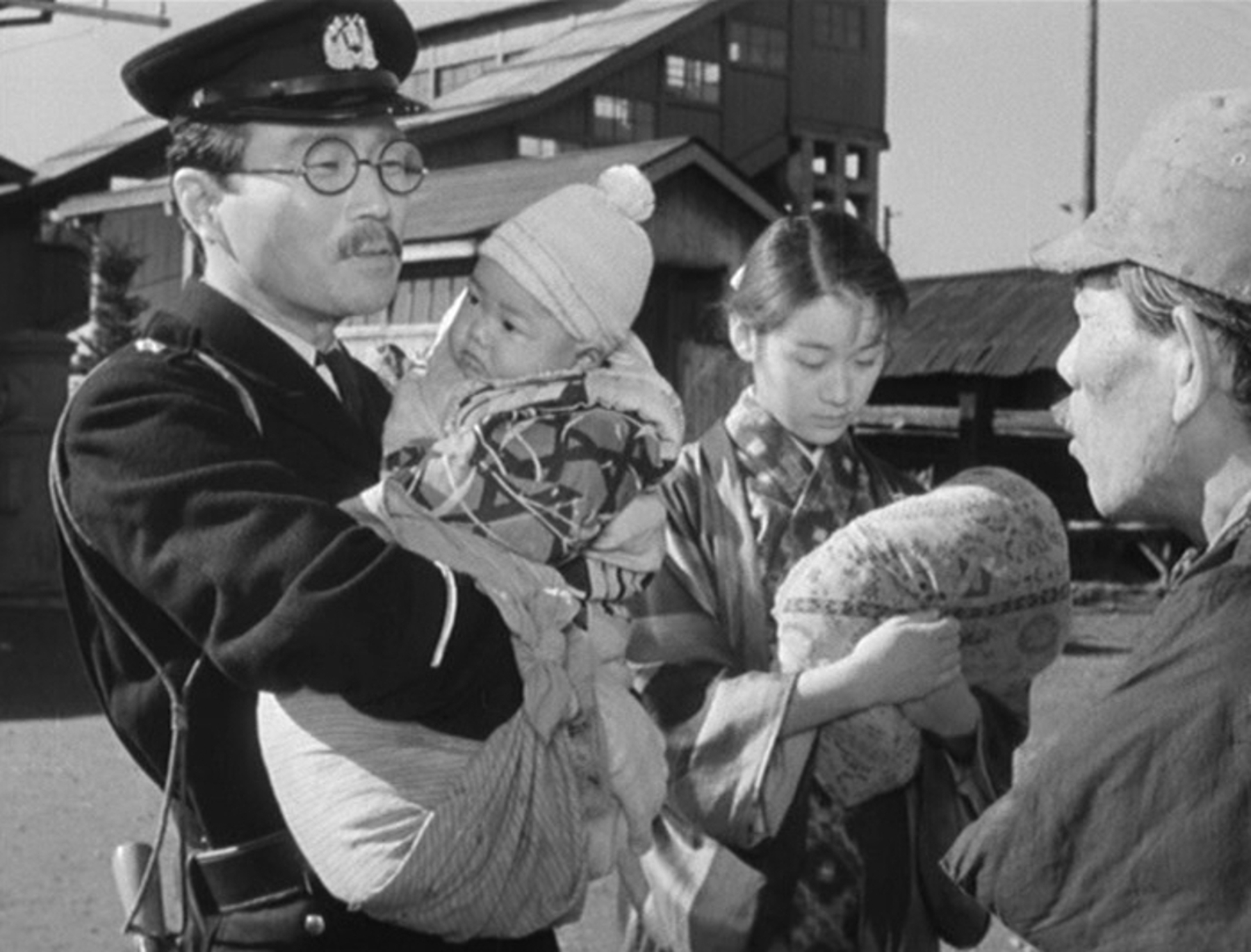
The word ‘Rashomon’ has now firmly acquired the place in English vocabulary. Even a person who has never seen the Kurosawa’s film uses the term. In Wikipedia, the word “Rashomon Effect” is defined as a term “to refer to contradictory interpretations of the same events by different persons, a problem that arises in the process of uncovering truth”. The word also found its entry in OED in the recent edition. In the film Rashomon, there is a crime and there are witnesses (suspects and victims). Each witness tells a story about the crime, – how it happened, who did what, – but each account is different from one another. We speculate why they contradict each other, – these may have been altered by their various emotions, cheated out by their vanity or obscured by their conscience.
Japanese use the different expression for that kind of a messy situation – ‘in a grove’. We say ‘the truth is in a grove’, meaning you will never know what really happened, since everyone involved is telling a different story. The expression comes from the title of a short story, In a Grove, published in 1921.
The film Rashomon is based on two short stories by Ryunosuke Akutagawa (1892 – 1927): In a Grove (藪の中, 1921) and Rashomon (羅生門, 1915). The major part of the film – the witnesses of a crime testifying in the court – is derived from ‘In a Grove’. Between these accounts of witnesses, we see three people taking refuge from heavy storm under the Rashomon, a giant gate of the ancient city of Kyoto. While waiting the weather to clear up, they discuss this court hearings. This part is not a faithful adaptation of the original ‘Rashomon’ story, but shares the underlying theme. You can find the plot summary in Wikipedia and English translation of the story here and here.
Ryunosuke Akutagawa is a giant in Japanese literature. His craft of storytelling, – especially short stories -, has never been surpassed and never will be. He often drew his inspiration from old Japanese tales or Chinese literatures, but modified it and narrated it in a paradigm of modern anxiety. Both In a Grove and Rashomon have their origin in ‘Anthology of Tales from the Past (今昔物語集, Konjaku Monogatari-shu)‘, a collection of more than one thousand tales, compiled and edited in the 12th century Japan.
The original short story Rashomon is based on a tale called ‘A Thief Climbing Up the Rashomon, Discovers Dead Bodies’ collected in Anthology. Many stories collected in this 12th-century Anthology are considered far older and this tale was probably from the 9th or 10th century, during the Heian Period. The Heian Period was the age of aristocrats and royal families, before the age of warlords. The original tale collected in Anthology is as follows: A thief, waiting for the darkness of a night, hid himself on the top floor of the Rashomon. There, he discovered a dead body of a young woman, and was stunned by an old woman pulling off hair from the dead body. The thief was frightened at the sight, but found out the old woman was trying to make a wig out of hair to make money. He robbed their clothes and hair pulled off from the dead and ran away.

Akutagawa kept the original plot element intact, but added the dynamics of modern drama. In his story, the man is not a thief at first. He becomes a thief in the story. It is one of the most devastating moment among his works, annihilating conscience, stabbing a sharp blade deep into dignity and hanging the last shred of compassion by its neck.
‘In a Grove’ is based on a tale called ‘A man traveling to the country of Tanba with his wife, assaulted by a thief in the Oe Mountain’ also collected in Anthology. This tale is also considered from the 9th century. A man was traveling with his wife in deep mountains. He was on foot, carrying a bow and arrows, his wife on a horse. Another young man appeared on the road, and accompanied them. This young man carried a long sword, which he boasted as a legendary sword from the country of Mutsu. They exchanged their weapons, as the man thinking he was getting a great deal. Then this young man turned a table and threatened them with an arrow. He tied up the man with a rope, raped the woman and took their horse, the bow, the arrows and the sword. The narrator comments the stupidity of the man and praises the cleverness of the young man.
As you can see, there is no element of ‘Rashomon effect’ in the 9th century original. While keeping the historical context and background intact, Akutagawa completely renovated its narrative, structuring it in seven separate ‘testimonies’. Each testimony was written in first-person narrative, – using ‘I’ as its narrator -, in the manner of modern court proceedings or judicial records. During the Heian Period, the legal system in the city of Kyoto was overseen by a judge called ‘Kebi-ishi’, who presided over the ‘Shira-su’, – a courtyard of white sands. Kebi-ishi never speaks, – in the novel, and in the film as well. We never know the verdict. It’s not that who took the rap (probably Tajomaru did), but it is about the maze of ‘truth’.
Many scholars suggested that, for this ingenious storytelling, Akutagawa might have drawn inspiration from two literary predecessors, – ‘The Ring and the Book (1868-69)’ by Robert Browning (1812 – 1889) and ‘The Moonlit Road (1907)’ by Ambrose Bierce (1842 – 1913).
[to Part 2]
Copyrighted materials, if any, on this web page are included as “fair use”. These are used for the purpose of research, review or critical analysis, and will be removed at the request of copyright owner(s).
